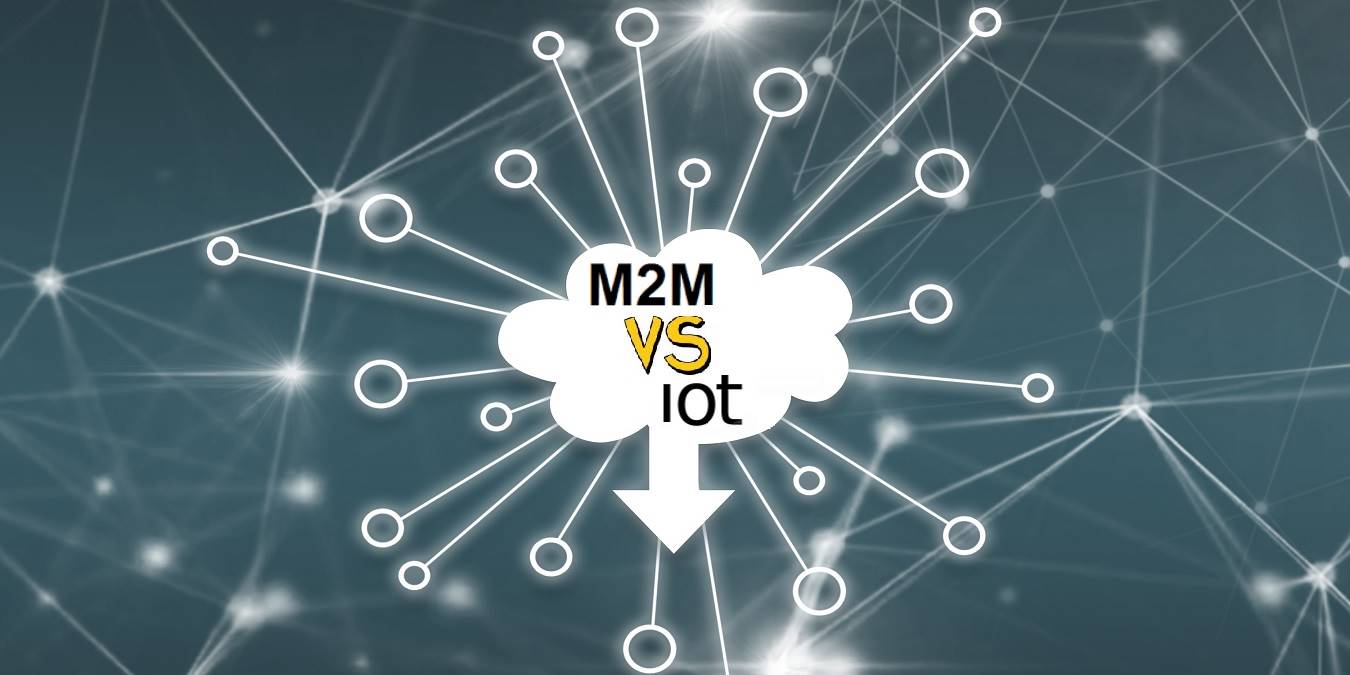
In a world of connected devices, Machine to Machine (M2M) and Internet of things (IoT) are two particularly important concepts to know. They have remarkably similar objectives: connecting smart devices without human involvement, capturing end user data, and remote monitoring. Both are used as interchangeable technologies, and from an end-user perspective, the differences aren’t really a big deal.
However, if you’re an IoT developer, you must understand what M2M is precisely for greater concept clarity. Knowing the technical differences between the two will give you a better idea of the underlying hardware or network infrastructure, the connectivity mechanism and data formats to be used, and the context where either can be more useful.
What Is Machine to Machine (M2M)?
Machine to Machine (M2M) can be defined as a “direct, point-to-point” communication standard between devices usually of the same type. It’s also meant for a specific on-premise application, which can be through wired or “non-Internet”-based wireless methods, such as Zigbee, RFID, Bluetooth, Wi-Fi, BLE, LoRaWAN, Sigfox, 6LoWPAN, and more.
An “M2M device” should always have a microcontroller (8-, 16- or 32-bit) with processors, on-board sensors and actuators, operating system, displays, buttons, APIs, and more. Both M2M devices communicating with each other should understand the same protocol, e.g. ZigBee. This is why they are considered similar “types.” Some kind of specific service is always enabled in an M2M installation which does not require human involvement.
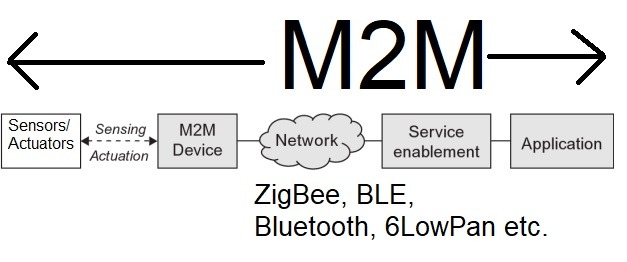
Since private Wi-Fi installations are secured against unauthorized access, M2M is therefore “not considered a part” of any Internet-enabled connected device’s infrastructure. It is more concerned with the “point-to-point communication” between the devices. A popular example of M2M would be a debit card chip that communicates with a bank’s server through a processor hosted in an ATM. Clearly the onset of M2M predates the Internet of things and even the World Wide Web itself!
Other popular applications of M2M include fleet management for smart transit, connectivity between smart-home automation devices (for example, through Zigbee), metering, remote monitoring through sensors, and telematics.
How Is M2M Different from IoT?
In contrast to M2M, the Internet of things (IoT) relies on Internet-connected devices, which transmit data from the cloud. Therefore, it is a successor of M2M technology, as it focuses on real-world objects to communicate with each other online, just like people surf the Internet. This it does by integrating the sensor and actuator data using big data, analytics, machine learning, smart speakers, artificial intelligence-based smart assistants, and other forms of IP network communication.
Clearly, the Internet is the most important component of the IoT mechanism, which sets it apart from M2M. While M2M only refers to direct communication between the devices in the context of a specific application, IoT refers to an entire network of connected objects.
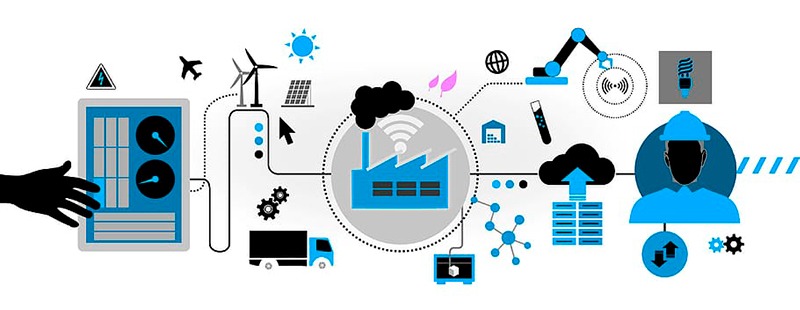
Another important difference between IoT and M2M can be defined in terms of the execution environment in which they operate. M2M objects usually have a proprietary, data processing middleware comprising service-oriented architecture – (SOA), MQTT, HTTP, etc. – which allows the objects to communicate with each other from a device or data source.
This is a “closed data format” and custom-made for a specific device solution. You cannot freely transfer the middleware settings of an M2M network into another set of devices, as the whole system has been designed for one specific purpose only. For example, you can’t use the ATM processor and chip mechanism of one bank on another bank, as the ecosystem is closed and does not allow that kind of free transfer.
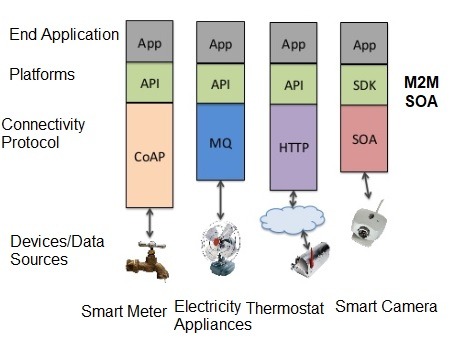
In sharp contrast, IoT objects nowadays generally use open APIs in the middleware to build and maintain connections between the objects. We earlier saw an example of Philip Hue IoT devices connected via Zigbee through a “bridge” device, which is a hub. It communicates with the Web and mobile applications online as well as smart devices such as the Hue dimmer switch and Hue motion sensor.
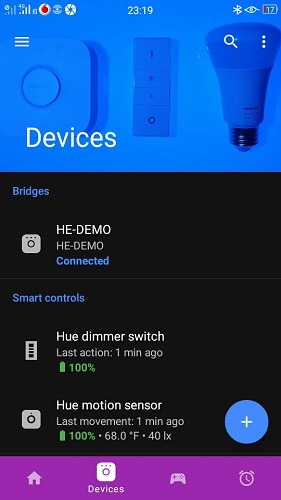
As we can see in this example, connecting IoT devices via Zigbee over open APIs allows better scalability into non-Philip Hue devices as well, as it supports IKEA, ConBEE Home Assistant, and many others.
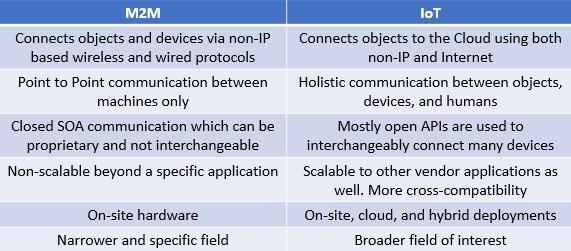
What Are the Uses of M2M in IoT?
As we have seen here, the best way to understand M2M is that it is a subset of IoT when applicable to specific, point-to-point connections. Arduino boards, modules, and shields when connected to develop a specific application would be a typical example of an M2M project.
M2M applications do a better job of tapping into sensor data as they are naturally designed for that purpose only. So it helps design adaptive modules for automatic vending machines, smart meters, point of sale devices in retail, and healthcare objects.
The following is an example of Azure Kinect healthcare, which uses a best-in-class depth camera, microphones, orientation arrays, and more, as a sophisticated example of an M2M kit. Once connected to the Azure portal, of course, it qualifies as an example of IoT in healthcare.

M2M is providing a significant contribution in the device-end of IoT technological evolution. It is likely to be interchangeably used within IoT projects. However, the differences between the two are very clear from a developer’s perspective.










